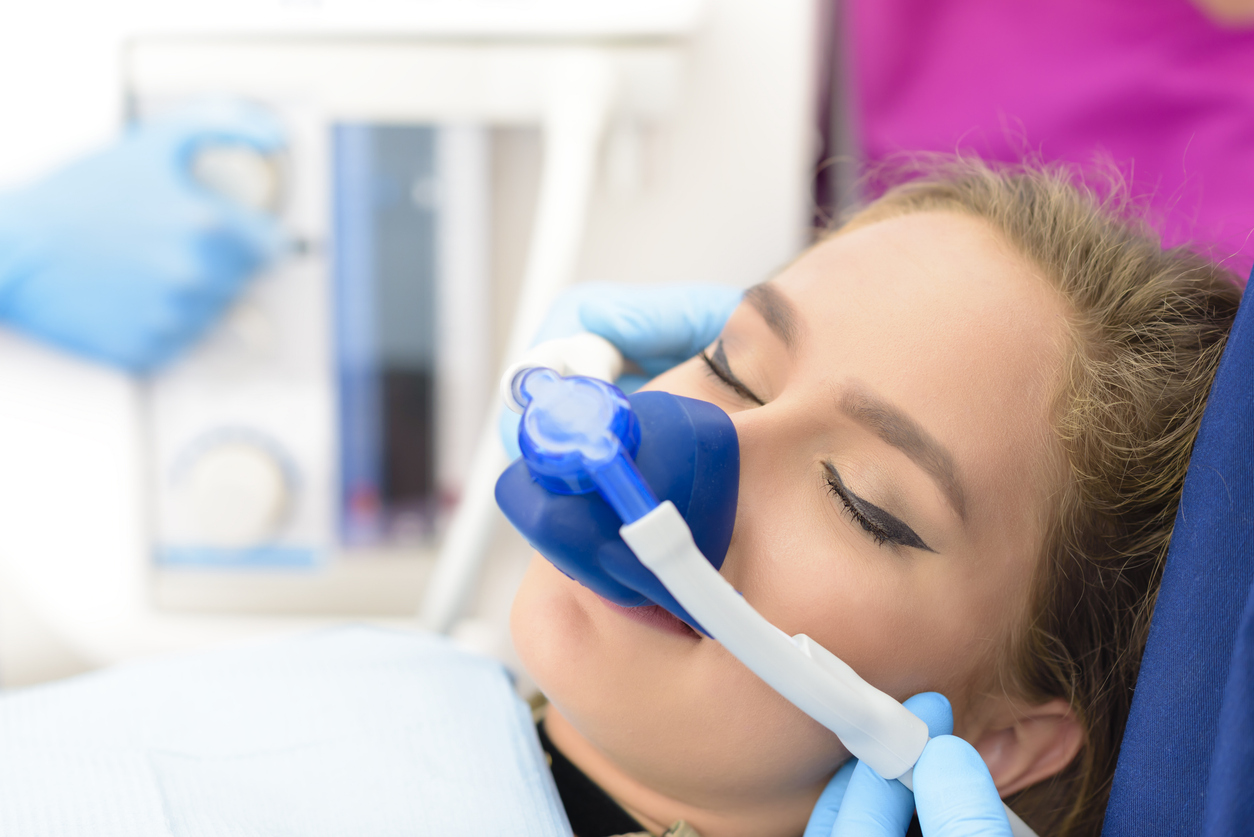Advancements in sedation dentistry have increased the opportunities for better dental care. Through the safe administration of sedatives, patients can have a pain-free (and stress-free) visit, regardless of what treatment they need. Unfortunately, it can be complicated to know which dental procedures require sedation. Below is an explanation of which dental procedures require sedation.
Which Dental Procedures Require Sedation?
The simple answer is that no dental procedure necessarily requires sedation. That said, any of them can benefit from its use. To understand what this means, we first need to understand local anesthetic devoid of sedation. Specifically, what does it do, and how does it differ from sedation?
The Comfort of Local Anesthesia
Local anesthesia is sufficient in almost any dental procedure to create a pain-free experience. From dental fillings to tooth extractions, all a patient needs is a few numbing injections to be immune to pain for the duration of their procedure.
Local anesthesia begins to work within minutes and can last for hours, depending on the type administered. It blocks the nerves from sending pain signals to the brain, allowing your dentist to perform treatment without your brain registering hurt.
In fact, local anesthetic is sufficient for even major surgeries. However, there is a difference between being sufficient and being appropriate. The appropriate anesthetic for dental surgery is determined by two main factors: the surgeon and the patient.
Why Choose Sedation Dentistry?
As previously mentioned, sedation can be used in any dental procedure. The reason for that is twofold. First, each person’s experience is subjective, and sedation may be the only route for a tolerable experience. Secondly, no two dental procedures are the same. For example, while tooth extractions can be completed without sedation, more complex cases may require sedation. A case in which your dentist needs you to remain immobile, for instance, would benefit from sedation.
The Patient Experience
When determining the use of sedation for dental procedures, a core deciding factor is the patient’s well-being and comfort. Namely, many patients experience dental anxiety.
Dental anxiety can range from mild worry to debilitating fear about visiting the dentist. It is not restrained only to significant procedures. Even a routine cleaning can elicit strong feelings of dental anxiety. If this describes you, know you are far from alone in this. Dental anxiety is likely much more common than you might think. Statistics vary, but in each case, the numbers point to the reality that a notable percentage of the population experiences dental anxiety.
A good dentist understands that a patient may feel anxious about their visit. Sedation dentistry allows patients to fully relax, regardless of their procedure.
The Surgeon Experience
Dental procedures have a wide range of complexity. Some dental filling treatments take only a few moments, while others can require a more involved approach. Some tooth extractions are straightforward and simply performed. Others require the complicated process of removing decaying bits of tooth from the gum line.
These more complex versions of dental procedures may benefit from sedation. Dental work requires precision, and even minor patient movements can create major complications. When you receive sedation, your body completely relaxes, thus reducing the risk that you unexpectedly move at a crucial moment of your procedure. In this way, sedation ensures a smoother overall process for both the patient and surgeon.
Dental Procedures That Most Often Use Sedation
Tooth Extraction
Tooth extraction tends to be much faster than patients expect. In the case of simple extractions, the procedure usually lasts mere minutes. Extracting wisdom teeth tends to take longer. The timeline further increases if they are impacted.
In some cases, the tooth that needs extraction is close to an important blood vessel or nerve and requires increased precision from your oral surgeon. By being sedated during such a procedure, you allow your surgeon increased control over the external factors involved in your procedure. No unexpected movement only increases the likelihood of the success of the operation.
Dental Implants
Dental implant placement is another common type of oral surgery. Much like extractions, implant surgery requires extreme precision. The implant must be placed correctly so it properly fuses to the jawbone.
Sedation dentistry provides the same benefits for implantation as it does for tooth extraction. A still, calm patient makes the entire process much easier for the surgeon. The patient benefits in that they can avoid the potentially stressful sight of rods being inserted into their gums. Arguably, it is a win-win situation.
A Skilled Dentist with Sedation Options
Dr. Patel has served as a leading dentist in Anaheim for years, providing patient-centric care for his community.

